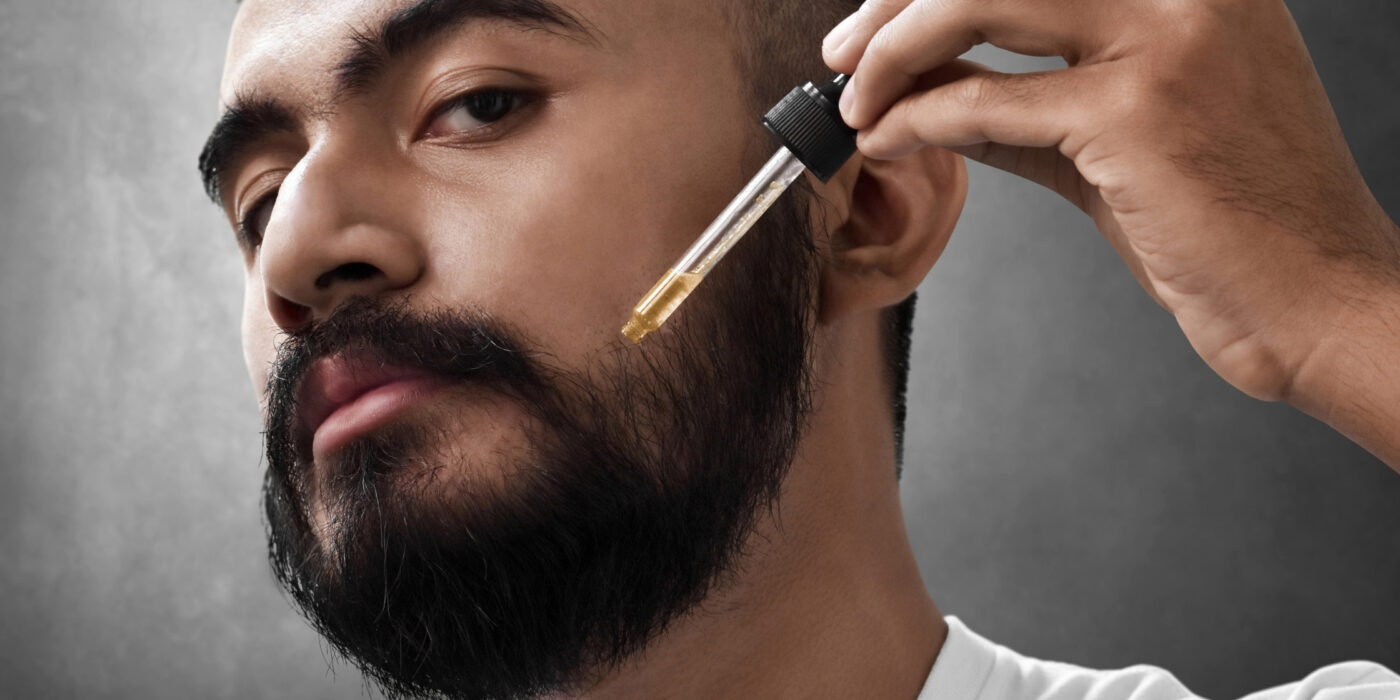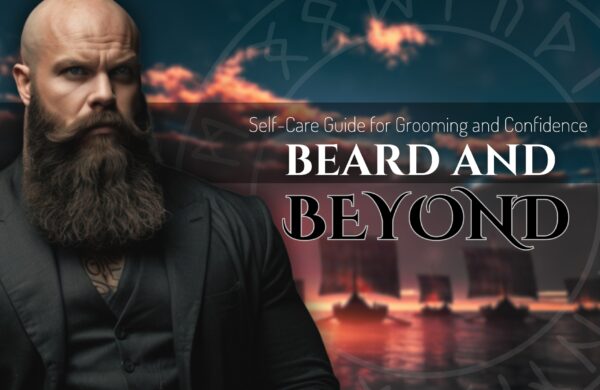Complete guide to facial hair maintenance underscores the idea that a well-groomed beard or mustache can be both a striking style statement and a booster for self-confidence. Achieving this polished look, however, involves more than letting hair grow wild. From selecting the most suitable style to understanding skin care fundamentals, this article provides a detailed overview of essential techniques and best practices. Men who adopt a thoughtful maintenance regimen not only look sharper but also promote healthier skin beneath their facial hair.
Complete Guide to Facial Hair Maintenance: Why It Matters
Facial hair has long been associated with masculinity, individuality, and personal expression. While some men maintain a short stubble for a rugged aesthetic, others opt for a carefully styled beard or mustache to make a bold statement. No matter the chosen look, maintenance is crucial.
- Elevated Appearance
A neat, well-shaped beard projects care and professionalism. By keeping lines clean and split ends trimmed, you present yourself as someone who pays attention to detail. - Enhanced Skin Health
Without proper hygiene and grooming, facial hair can trap dirt, sweat, and bacteria. This buildup often irritates the skin and leads to acne, itching, or dryness. Routine cleansing and conditioning address these issues before they escalate. - Personal Confidence
Knowing your beard or mustache is in top shape can boost self-esteem. The synergy of well-groomed facial hair and healthy skin fosters a sense of pride and authority, whether you’re tackling professional tasks or heading out for social engagements.
For more insights on holistic men’s care, feel free to check our in-depth guide on men’s healthy living to complement your facial hair routine with overall wellness practices.
Choosing the Right Style
Assessing Face Shape
Men come in a wide variety of facial structures—square, oval, round, rectangular, and more. Understanding your face shape is a pivotal step in this complete guide to facial hair maintenance:
- Round Faces: Angular beards or goatees can create an illusion of length, balancing out the roundness.
- Square Jaws: Softer lines help soften strong angles. Goatees or circle beards often flatter square jawlines.
- Oval Faces: Considered the most versatile shape, oval faces can accommodate various beard lengths and styles.
- Rectangular or Oblong: A fuller beard or mustache can add width, preventing an overly elongated appearance.
Personal Preference and Lifestyle
- Professional Settings
Shorter, neatly trimmed beards or mustaches may be more acceptable in conservative workplaces, reflecting a sense of discipline. - Active or Sports-Focused Lifestyles
Men frequently on the move—especially in athletic settings—may prefer shorter or low-maintenance facial hair to avoid discomfort or sweat buildup.
American Academy of Dermatology (AAD) – Offers guidance on hair and scalp care, including tips for beard grooming and preventing common skin issues.
Cleansing and Hygiene Basics
Why Regular Cleansing Matters
Facial hair can trap sweat, sebum, and other debris, especially in warm or humid conditions. Over time, these accumulations clog pores and lead to skin irritations like acne or itchy patches. A complete guide to facial hair maintenance addresses cleansing as a non-negotiable step:
- Daily Wash
Use lukewarm water and a mild cleanser specifically formulated for facial hair. Ordinary shampoos can strip natural oils from both skin and hair, causing dryness. - Exfoliation
Gentle exfoliation once or twice a week helps remove dead skin cells beneath the beard, reducing the risk of ingrown hairs and promoting smoother growth. Avoid harsh scrubs that may inflame sensitive areas.
Best Practices for Beard Washing
- Pre-Rinse
- Thoroughly wet the beard with lukewarm water to loosen dirt and prep hair follicles for cleansing.
- Apply Product
- Work a nickel-sized amount of beard-friendly shampoo or cleanser into your palms. Massage it into the facial hair with circular motions, reaching the skin beneath.
- Rinse Completely
- Trapped soap residue can irritate the skin, so ensure you rinse thoroughly until the beard feels clean and residue-free.
- Pat Dry
- Use a soft towel to gently pat your beard dry—rubbing vigorously can cause breakage and frizz. Allow the hair to air dry if possible, or use a cool setting on a hairdryer.
Beard and Facial Products for Men Affiliate
Conditioning and Moisturizing
Importance of Hydration
Facial hair requires consistent hydration to remain soft and manageable. Dry, brittle hairs break easily, leading to split ends and an unkempt appearance. Meanwhile, moisturizing also benefits the underlying skin, preventing flakes and itchiness.
Types of Beard Conditioners
- Beard Oils
- Lightweight and quickly absorbed, these oils commonly contain natural ingredients like jojoba, argan, or sweet almond oil. They shield both hair and skin from dryness, imparting a subtle sheen.
- Beard Balms
- Thicker in texture, beard balms can tame flyaways and lend a slight hold, making them ideal for medium to longer beards. The beeswax or shea butter in balms delivers hydration and helps shape your style.
- Leave-In Conditioners
- Specifically formulated for facial hair, leave-in conditioners can be massaged into the beard without rinsing. They reduce frizz and create a smooth appearance over extended periods.
Application Tips
- Use Sparingly
Over-application can leave your beard looking greasy. Start with a few drops of oil or a small scoop of balm, then add more as needed. - Massage Thoroughly
Ensure the product reaches the skin by massaging in gentle, circular motions. This approach stimulates blood flow, fostering healthier growth. - Focus on Ends and Tips
The oldest, driest portions of beard hair often lie at the tips. Pay special attention to these segments to prevent split ends and tangling.
Trimming and Shaping Techniques
Tools of the Trade
- Clippers or Trimmers
Ideal for consistent lengths. Many models come with interchangeable guards, allowing you to control how much hair is removed in each pass. - Scissors
Suited for detailed shaping and removing stray hairs. A pair of high-quality, stainless-steel scissors ensures accurate and precise snips. - Razors
Useful for defining lines along the cheeks, neck, or jaw. Whether you prefer a cartridge razor or a traditional safety razor, keep it sharp to avoid tugging.
Defining the Neckline and Cheek Lines for Facial Hair Maintenance
A complete guide to facial hair maintenance wouldn’t be thorough without covering the basics of shaping:
- Neckline
- The neckline often sits at or just above the Adam’s apple. Imagining a curve from behind each earlobe to the center of your neck can help guide the trim.
- Shave below this line with a razor, while using a clipper guard or slightly shorter setting for the boundary area to achieve a clean transition.
- Cheek Lines
- Cheeks can be trimmed to highlight your natural bone structure. If your hair grows high on your cheeks, trim carefully to create a clean, diagonal boundary (from sideburn to the corner of your mouth).
- Avoid overly steep angles that may look unnatural or overly aggressive.
Frequency of Maintenance
- Weekly Check-Ins
Inspect the beard for stray hairs, split ends, or unruly patches. Trimming a little each week helps maintain a consistent shape and reduces the risk of needing a major overhaul. - Monthly Overhauls
Depending on growth rate, a more comprehensive trim might be necessary every few weeks. This process evens out variations in length and ensures your style remains cohesive.
Advanced Mustache and Goatee Care
Mustache Styling
- Trimming Length
- A mustache that continually creeps over the upper lip can interfere with eating or speaking. Keep the length in check with small, routine snips.
- Some men opt for specialized mustache scissors for greater control.
- Wax and Pomade
- For those exploring classic styles (e.g., handlebar, chevron), mustache wax provides hold. Warm a small amount of wax between your fingers and shape the tips as desired.
Goatee Maintenance
- Precision Shaping
- A goatee frames the mouth and chin area. Ensure lines are symmetrical on both sides, checking a mirror from various angles.
- Consistency in Length
- Strive to match goatee length with the rest of your facial hair, especially if you also sport sideburns or a short beard. An abrupt mismatch in lengths can look disjointed.
If you want more detailed advice on shaping specific facial hair styles, refer to our complete styling guide for men’s grooming, which delves into beard shapes, lengths, and techniques.
Skin Health Under Facial Hair
Common Concerns
- Dry or Flaky Skin
Trapped dead skin cells can result in “beard dandruff,” which appears as small flakes on your facial hair. Regular exfoliation and moisturizing can prevent this. - Ingrown Hairs
If hair grows back into the skin instead of emerging outward, painful bumps may form. Shaving too closely or using improper technique often exacerbates this issue.
Prevention and Remedies
- Exfoliation
Gentle scrubs or facial brushes loosen dead skin cells, reducing the likelihood of clogged follicles. - Proper Razor Use
If you shave portions of the beard or neck, move the blade in the direction of hair growth. Applying too much pressure can lead to friction and ingrowns. - Targeted Products
Certain topical solutions, including salicylic acid or glycolic acid washes, help combat ingrown hairs by keeping pores clear. Consulting a dermatologist may also be beneficial for recurring problems.
Men’s Health – Provides articles on growing, maintaining, and styling different types of facial hair, with professional advice and product recommendations.
Overcoming Common Challenges for Facial Hair Maintenance
Patchy Beard Growth
Men with uneven or sparse beard growth can still enjoy a refined look by focusing on shaping and length consistency. Over time, hair may become fuller with proper nutrition, exercise, and care. Some individuals consider topical solutions or vitamins to encourage healthier growth, although results vary.
Time Constraints
A well-maintained beard or mustache need not require hours of daily upkeep. Focus on crucial tasks—cleansing, basic trimming, and light conditioning. Setting aside just a few minutes each morning or evening can sustain a polished appearance.
Trial and Error
It’s perfectly normal to experiment with different styles before settling on one that complements your facial features. Document your progress with photos to evaluate the transition. A willingness to adapt and learn fosters a sense of ownership and satisfaction with your final look.
Complete Guide to Facial Hair Maintenance: Long-Term Approach
The best way to achieve consistent results in your complete guide to facial hair maintenance journey is by integrating routine, adaptability, and knowledge. Here’s how:
- Routine Checkups
- Assess hair texture and growth patterns weekly. Quick touch-ups prevent major corrections later.
- Condition your facial hair at least every other day (or daily for thicker styles) to keep dryness at bay.
- Product Selection
- Remain open to testing new cleansers, oils, or balms. Look for natural, non-irritating ingredients.
- Patch test whenever you switch brands or add new items to ensure minimal risk of adverse reactions.
- Stay Informed
- Grooming trends evolve, and so do product formulas. Following reputable sources, barbers, or dermatologists helps you stay current.
- Celebrate Progress
- Track improvements, whether it’s reduced dryness, better symmetry, or a faster morning routine. Small successes highlight the value of dedication.




